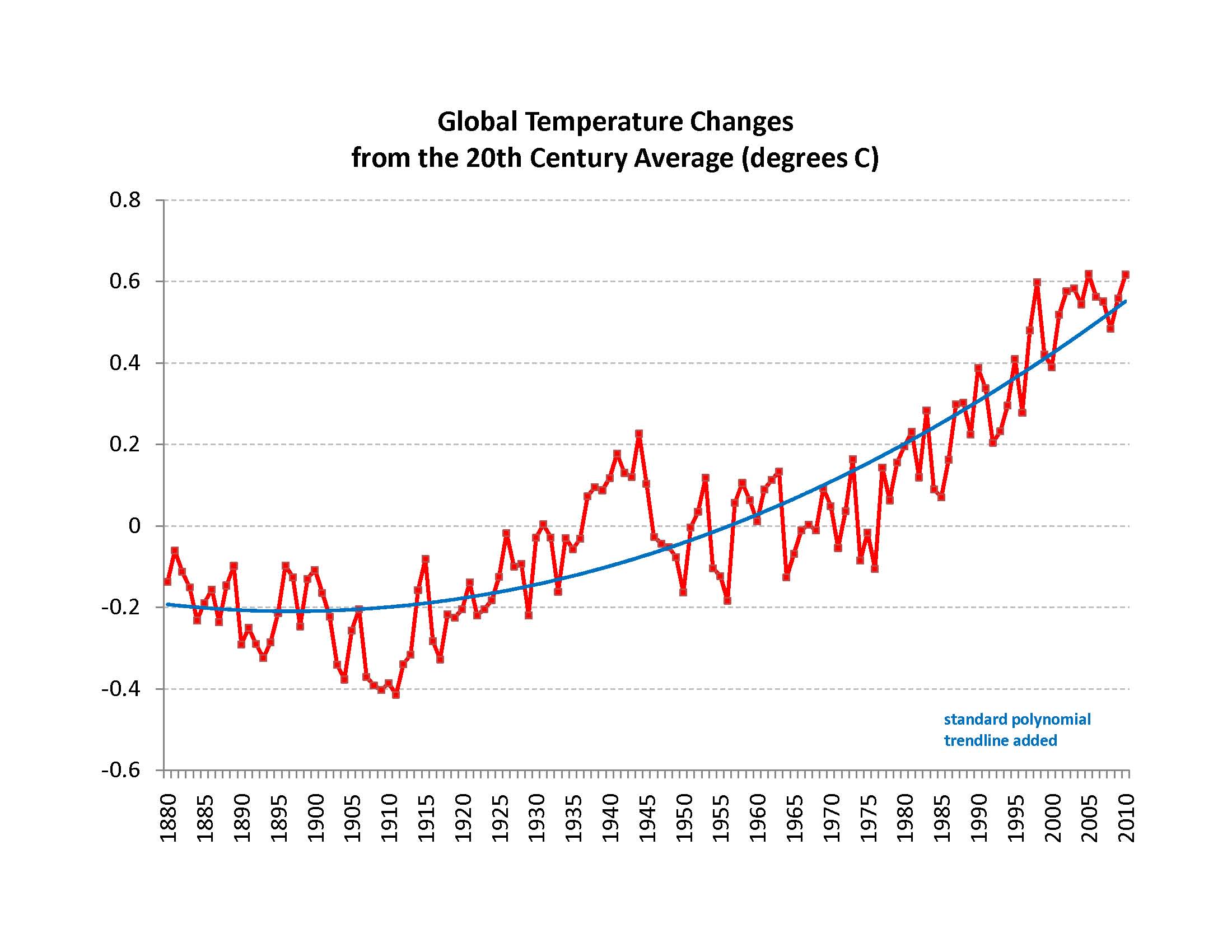In this week's
Science, NCAR climatologist Jeff Kiehl presents the case that when Earth's atmosphere hits 1000 ppm of carbon dioxide — which will happen around 2100 on a business-as-usual scenario — the global average temperature will reach 30°C. That's about twice today's global average of ~16°C. He bases this conclusion on what's known about previous periods in Earth's history over the last 100 million years.
30°C would amount to a re-run of the Cretaceous, with most surface ice melted away and huge increases in sea level.
Kiehl is no credulous consumer of model results. A few years ago, he was a vocal critic of the practice of tuning climate models. He
raised the question of how overall climate model projections for CO2 doubling varied by only a factor of two, when those same models contained critical aerosol submodels that varied by a factor of three.
Here's his argument:
The atmospheric CO2 concentration currently is 390 parts per million by volume (ppmv), and continuing on a business-as-usual path of energy use based on fossil fuels will raise it to ∼900 to 1100 ppmv by the end of this century ...Recent reconstructions of atmospheric CO2 concentrations through history indicate that it has been ∼30 to 100 million years since this concentration existed in the atmosphere... The data also reveal that the reduction of CO2 from this high level to the lower levels of the recent past took tens of millions of years. Through the burning of fossil fuels, the atmosphere will return to this concentration in a matter of a century. Thus, the rate of increase in atmospheric CO2 is unprecedented in Earth's history. [
full article]
Kiehl goes on to discuss what happened at a previous CO2 peak of ~1000 ppm, around 35 million years ago. That peak resulted in tropical warming of 5° to 10°C, and much more warming in the polar regions — up to 15°-20°C. (Global warming is well understood to vary by latitude, with the poles warming far more than the equator. That's because the climate system functions to transport incoming solar heat to the poles, where more of it can be re-radiated into space.)
What can we learn from Earth's past concerning the climate's sensitivity to greenhouse gas increases? Accounting for the increase in CO2
and the reduction in solar irradiance, the net radiative forcing—the change in the difference between the incoming and outgoing radiation energy–of the climate system at 30 to 40 Ma [million years ago] was 6.5 to 10 W m
−2 with an average of ∼8 W m
−2. A similar magnitude of forcing existed for other past warm climate periods, such as the warm mid-Cretaceous of 100 Ma
. ...The global annual mean temperature at this time can be estimated to be ∼31°C, versus 15°C during pre-industrial times (around 1750)
. Thus, Earth was ∼16°C warmer at 30 to 40 Ma.
Kiehl finishes with a disturbing conclusion. It may be, he suggests, that model calculations of the climate's sensitivity to greenhouse gases have underestimated that sensitivity by a factor of two or more. If true, our grandchildren — even, for many of us, our children — are in for a truly cataclysmic heat wave.
